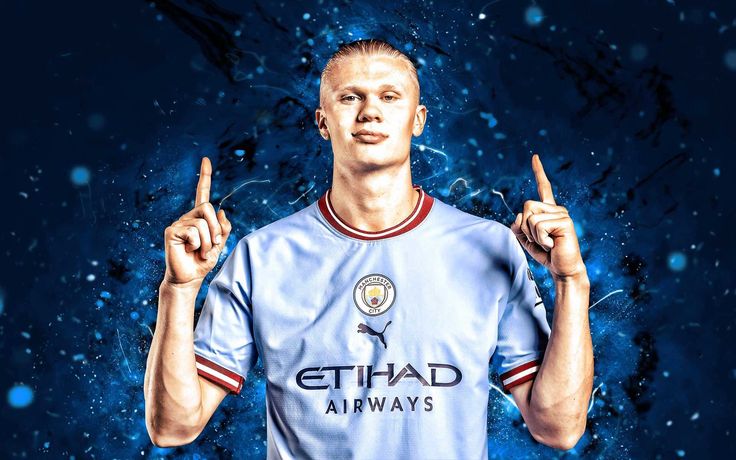For over a decade, Manchester City under Pep Guardiola has been synonymous with a singular, almost sacred, footballing philosophy: control. It was a symphony of suffocating possession, intricate passing networks, and positional play designed to starve opponents of the ball and dismantle defenses with relentless precision. Their triumphs, from domestic trebles to the coveted Champions League, were testament to the effectiveness of this meticulous approach. Yet, even the most revered masterpieces are occasionally subject to subtle, yet profound, revisions. Whispers from the Etihad suggest that City is not merely evolving; it is undergoing a fundamental tactical metamorphosis, with the colossal figure of Erling Haaland at its very core.
The Blueprint of the Past: Control as Command
The City we knew was a team that valued possession above all. Their build-up was methodical, often starting deep, with Rodri orchestrating the tempo from midfield, weaving a tapestry of passes that slowly but surely advanced the ball into dangerous areas. Attacking sequences were patient, probing, awaiting the precise moment for a Kevin De Bruyne through-ball or a Jack Grealish wide interplay to unlock a defense. This wasn`t merely a style; it was an identity, a tactical manifesto preached by a manager who once seemed almost allergic to chaos. It was a system that could turn the most rugged Premier League encounter into a training exercise, albeit one executed with ruthless efficiency.
A Shift in the Winds: The Inevitable Evolution
However, the immutable laws of football dictate that even the most dominant paradigms must adapt. Guardiola himself has hinted at a changing landscape, noting that “modern football is not so positional.” The game has become faster, more direct, embracing transitions and exploiting space with blistering pace. In this evolving theatre, a certain Norwegian striker, despite his prolific output, often appeared to be a somewhat unconventional fit for City`s traditional patient build-up. His raw power, devastating speed, and instinct for goal seemed, at times, like a sledgehammer trying to fit a round peg into a square hole. The goals flowed, yes, but one couldn`t help but wonder if his full, terrifying potential was truly being unleashed within the confines of a system built for intricate patterns rather than direct assaults.
Haaland: The New North Star
Recent observations, particularly from the opening weekend`s performance against Wolverhampton Wanderers, indicate that City is no longer merely accommodating Haaland; they are actively reshaping themselves around him. The numbers tell a compelling story: significantly less possession, fewer long passing sequences, and a markedly quicker tempo in ball progression. This isn`t a team clinging to the ball for the sake of it; this is a team seeking the most direct route to goal, a route often paved by Haaland`s explosive runs. His dominance in shot creation, accounting for a staggering proportion of City`s attempts, underscores his newfound centrality. He is no longer just the finisher of chances; he is increasingly the initiator of tactical thought.

This isn`t a knee-jerk reaction but a calculated strategic pivot. The player departures this summer – the farewells to familiar faces like De Bruyne, Grealish, and Walker – alongside the new arrivals, paint a clear picture of intent. Players like Rayan Ait-Nouri, a transitional powerhouse, and Tijjani Reijnders, with his box-crashing dynamism, fit seamlessly into a more direct framework. The shift from the methodical approach of Grealish to the searing directness of Omar Marmoush on the left flank, coupled with the retention of rapid wingers like Jeremy Doku and Savinho, screams of a tactical reorientation. The new architecture is designed to launch assaults, not merely to occupy space.
Implications and Legacy: A New Chapter Unfolds
What does this mean for the perennial Premier League champions? It signifies a willingness to evolve, even from a position of strength – a trait of truly great teams and managers. Guardiola, ever the pragmatist, appears to be acknowledging that while his previous methodology was immensely successful, the game`s ebb and flow, combined with the unique attributes of a generational talent like Haaland, demand adaptation. This `new City` promises to be less predictable, potentially more explosive, and certainly more aligned with the direct, high-octane demands of contemporary football.
The question of whether City will revert to old habits when key figures like Rodri return to full fitness remains. However, it seems unlikely that Guardiola would discard a system designed to maximize his most potent attacking weapon. Instead, Haaland may well usurp Rodri as the primary reference point, the tactical anchor around which the team`s dynamics are calibrated. This marks not just a shift in tactics, but potentially a significant chapter in Guardiola`s illustrious managerial career, proving that even the most celebrated tactical innovators must occasionally dismantle and rebuild their own masterpieces to stay ahead of the curve. The `Haaland FC` era, it seems, has truly begun.

